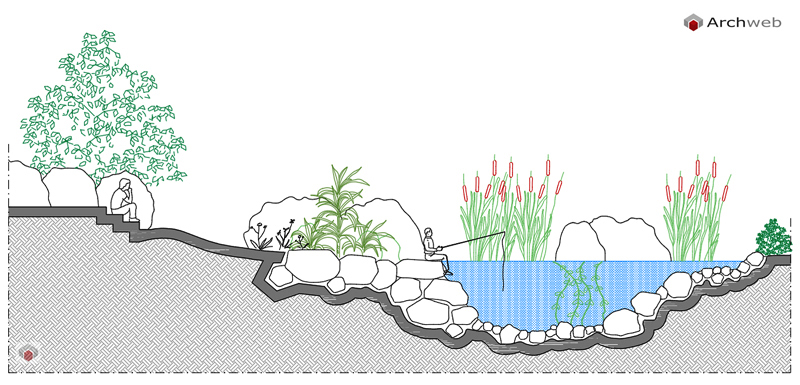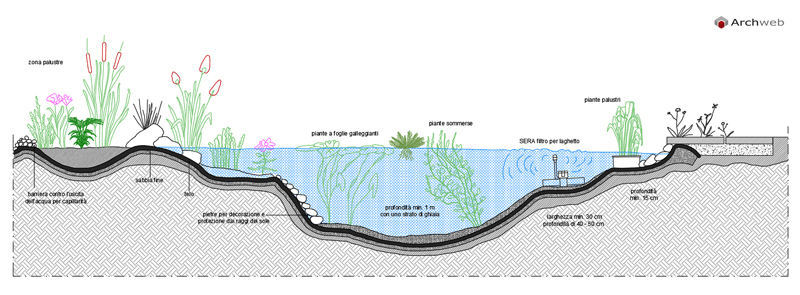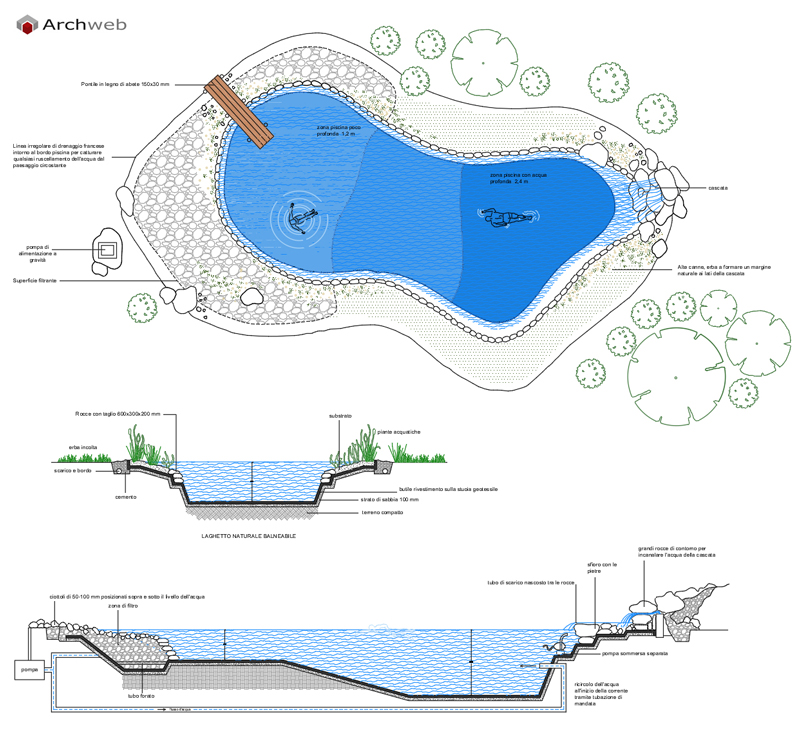Water mirrors – ponds
Sections like a park with a pond
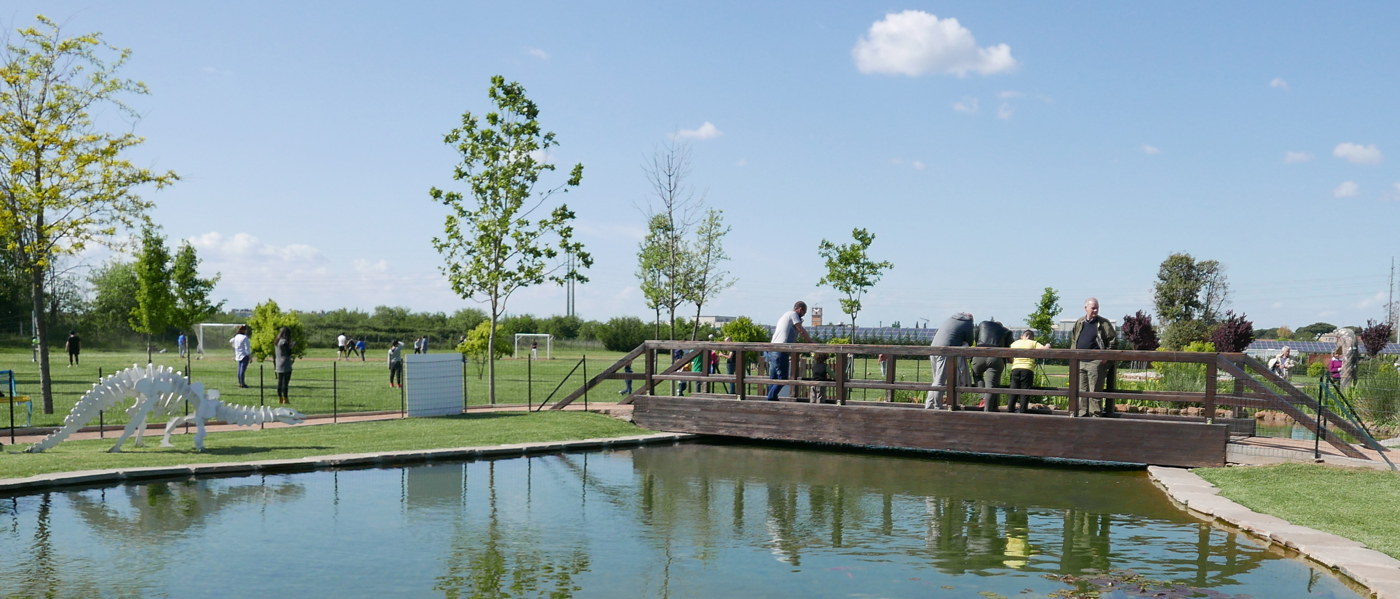
The use of artificial lakes in parks and gardens
The green element, if enriched by the presence of a body of water, constitutes a fundamental element in the urban structure as it determines a plus value thanks to which the psycho-physical well-being of the individual is guaranteed. In fact, the presence of lakes and aquatic oases within the city parks favors the maintenance of biodiversity and counteracts the pollution that is rampant in the city scenario.
The changing needs make water a fundamental element also for dealing with noise pollution and overcoming climate problems. In this regard, there are different plant species that, if used correctly within the aquatic habitat, create balanced ecosystems that are useful for the local microclimate. The oxygenating plants survive submerged in the water and allow the living organisms present in the lake to grow and develop.
The filter plants float on the surface of the water body and perform the dual function of “refuge” for microorganisms and aquatic animals and of aesthetic ornament thanks to their beauty. Finally, there are the shade plants that keep the water temperature cool, filtering the sun’s rays that affect the surface. Water lilies are an example. Furthermore, the presence of lakes and ponds in the parks helps to improve their aesthetic impact, especially during the night, thanks to the inclusion of lighting designed to recreate pleasant effects that make it a real attraction pole for pedestrians.
If mirrors of water are considered an element of vital importance for the climate and environmental protection, they are able to ensure peace and relaxation for those who visit the park. In fact, it is possible to admire evocative views that can restore a romantic and relaxing atmosphere, perfect for taking a break from the hectic everyday life.
From the point of view of the safety of the individual, it is also important that the so-called “blue surfaces” are equipped with appropriate barriers and hindering systems that protect them from accidentally falling into them, regardless of the depth of the water.
If we happen to observe this important type of ecosystems present within urban parks, it is possible to distinguish the wetlands between lakes, ponds and swamps. They can be natural or artificial, stable or temporary, with fresh or brackish water. The size and depth of the water can vary: for example during the warmer seasons, in the smaller pond, the water level can drastically decrease and the high temperatures put a strain on the survival of the organisms that live there.
In the planning phase, it is therefore necessary to implement choices aimed at specific needs, also in relation to climate change and territorial characteristics.
The first section concerns the typical layout of a park where green elements, paths and water mirrors alternate.
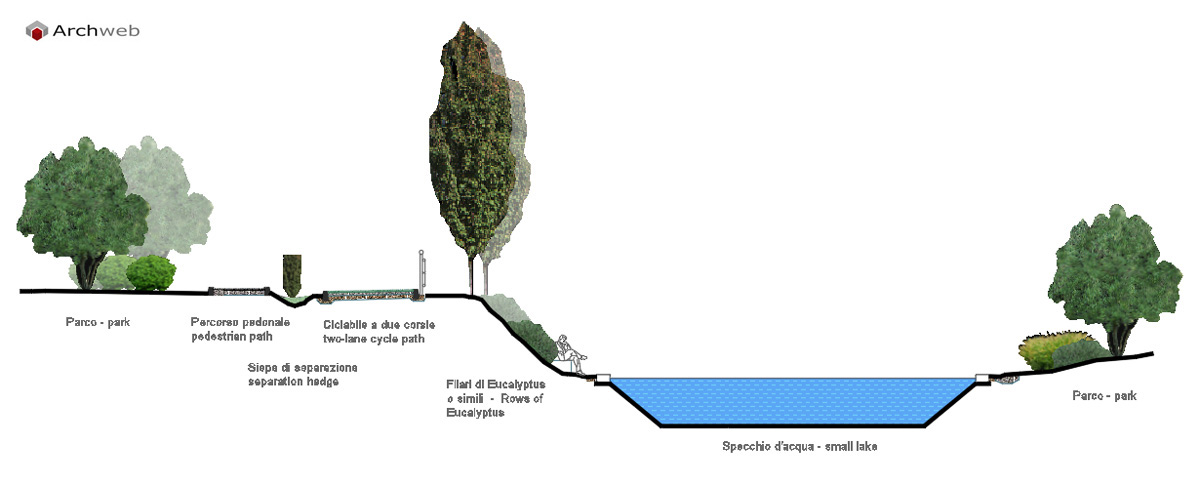
The solution in section includes from left to right: a green mass, a pedestrian path, a filter and separation element made up of a laurel hedge, the cycle path, a row of tall trees or with strong verticalisation, the bank pronounced slope with masses of trees covering it, section of the lake, natural dirt path along the entire perimeter, masses of trees for shading the path.

Compared to the higher version, this section has a small lake with gradually deep banks and a greater opening towards the surrounding park.



























































